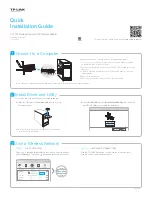
3 Installation
can thus be connected to the computer with a standard 9-pole cable (1 to 1 connections).
All handshaking lines are connected and can be controlled by the PTC. In the present
PACTOR software, however, handshaking is not used.
9
8
7
6
5
4
3
1
2
Figure 3.2:
RS232 Connections
ect
a GPS receiver to the PTC-IIex
.
3.3
Connections to the transceiver
ent from the PTC-IIex to the radio
he HF signal.
r is not overdriven.
zed, it is desirable to prevent noise from
-
nd needs no “external help”.
PIN 1:
0 mV (peak to
1 k
Ω
.
Pin 1:
DCD - Output.
Pin 2:
TxD - Transmit data output (to computer).
Pin 3:
RxD - Receive data input (from computer).
Pin 4:
DTR - Input (RxD secondary serial port).
Pin 5:
Ground (GND).
Pin 6:
DSR - Output.
Pin 7:
CTS - Input.
Pin 8:
RTS - Output.
Pin 9:
RI - Output (TxD secondary serial port).
The handshake signals (pin 4 and 9) are used as secondary RS232 channel e.g. to conn
PACTOR-II uses Differential Phase Shift Keying (DPSK), which leads to a very narrow
bandwidth signal. In order to maintain this advantage of PACTOR-II on the bands,
correct setting up of the transceiver is required. Overdriving of the transceiver will lead to
a greatly increased bandwidth. The optimal adjustm
equipment is described in chapter
3.3.4
on page
14
.
The complex PACTOR-II modulation scheme is totally different, and has nothing
whatsoever to do with simple FSK. It is therefore IMPOSSIBLE to use the FSK
modulators found in some transceivers to generate the signal. The PACTOR-II
signal must always go via the indirect route, by using SSB to generate t
This is of no disadvantage providing the transceive
Some hints to adjust the settings of your transmitter:
•
If possible use a 500 Hz IF-filter for PACTOR-II and a 2400 Hz IF-filter for
PACTOR-III. Never use a IF-filter with a smaller bandwidth than mentioned. IF filter
(SSB-filter) with wider bandwidths won´t cause problems at all. Although the filtering
by the DSP of the PTC-IIex is always optimi
the input of the PTC-IIex as far as possible.
•
Under no circumstances use audio processors. The peech-compressor of the
transceiver will damage the PACTOR-II signal in the same way as external DSP
audio filters being so popular at the moment. These external DSP audio filters create
inpredictable signal propagation delays which are absolutely undesirable. The PTC
IIex filters the signal optimal with the integrated DSP a
•
Noise blanker and notch filter should be switched off.
The PTC is connected to the transceiver via an 8 PIN DIN socket.
Audio output from the PTC to the transmitter.
The PTC-IIex supplies a pure
audio signal to the microphone input of the transceiver. The output amplitude can
be adjusted with the FSKA and PSKA commands from 30 to 300
peak) open circuit. The output impedance of the PTC-IIex is
10
Summary of Contents for PTC-IIex
Page 14: ...List of Figures and Tables XII...
Page 30: ...3 Installation 16...
Page 108: ...7 Audio 94...
Page 126: ...8 FAX 112...
Page 173: ...12 SYStest 159...
Page 183: ...14 Circuit Description 169...
Page 195: ...15 Basics 181...
Page 201: ...B Technical Data 187...
Page 202: ...C Layout Appendix C 19 Layout B 1 Motherboard Figure B 1 Motherboard 188...
Page 203: ...C Layout 189...
Page 215: ...Index 202...
















































